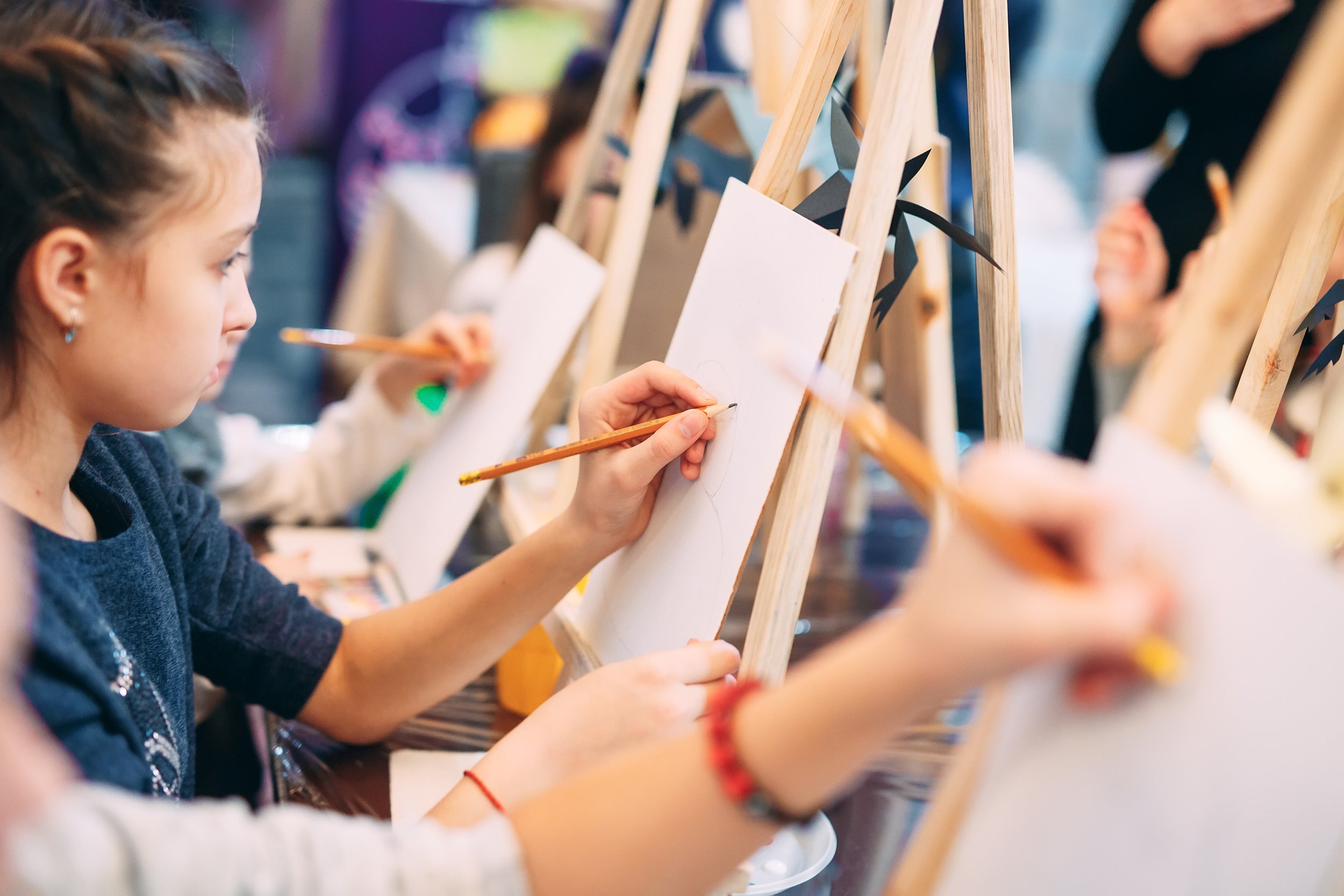
There is a drawing crisis in America.
The drawing crisis refers to when children around ages 9 to 13 lose interest in drawing. Their artistic confidence wavers because they compare their art to others: peers, adults, and more realistic representations of the world around them.
Why is there a drawing crisis?
Developmental Shift
Young children draw with abandon. They are less concerned with accuracy or realistic representation of their work. Then, around 9 to 13, children enter the"realism stage" in artistic development, where they become more concerned with drawing realistically. If their drawings don’t match expectations, frustration sets in, leading many to stop drawing altogether. While this shift is a typical part of development, without guidance and encouragement, many children abandon drawing, convinced that they are not "good" at it. This leads to a life-long belief: “I can’t draw.”
Increased Self-Criticism
Along with a shifting belief in abilities, the inner critic develops. With heightened awareness of societal standards, children in the drawing crisis internalize the idea that only those who draw in highly realistic style are talented artists, reinforcing the belief that “I can’t draw.”
School & Societal Influences
Many US schools also abandon art programming in junior highs and middle schools, shifting more time to reading and math skill development. This reduction in art instruction reinforces societal beliefs that drawing is unimportant or valued.
Society's emphasis on standardized testing and STEM subjects shove art into the background, making it harder for children to believe creative practices like drawing are worth pursuing.
When art programming is available, conventional art teacher training often reinforces the belief that highly realistic drawings are “good.” At the same time, those with alternative means of representation are “less good,” unintentionally providing student feedback that reinforces the inner critic to exclaim more loudly, “I can’t draw.”
Families, too, may place more value on science, math, and reading, encouraging their middle-school child to read, practice math skills, or participate in home-brewed science experiments, leaving the crayons and paper for what they’ve deemed more serious skill development. Or, if their 12-year-old approaches–proud of their recent drawing–the parent may also be more likely to provide critical feedback–aiming for their child’s work to match their expectations of a “good drawing,” and inadvertently giving power to their child’s inner-critic, decreasing artistic self-esteem.
Lastly, with the onset of adolescent arrives more intense peer relationships. Children often compare their drawings with their peers and may feel deflated if their work is not as detailed or realistic. This comparison further diminishes confidence and joy in creative processes.
Stop the Drawing Crisis with Get Drawing!
How do we support students’ drawing journey?
Encourage Process Over Product
We focus on the joy of drawing and exploration, placing emphasis on process over outcome.
Providing Positive Reinforcement
Through the innovative NeoLucida Art Curriculum, hands-on training, and individualized coaching, we support art educators in fostering safe, inclusive, and joyful classrooms that elevate drawing practice and celebrate process and student efforts so everyone can Get Drawing!
Integrating Art
We provide free resources on integrating art into core curricula, demonstrating that art belongs everywhere and is for everyone.
Art as Practice
We follow Carol Dweck’s Growth Mindset. Any skill, including artistic skills, can be developed through focus and effort, helping kids see drawing as something that will improve with dedicated practice.
Benefits
Drawing and Socio-emotional Learning
Visual arts offer kids a safe, creative way to share their feelings and experiences without needing words. Through drawing, kids can visually represent their inner feelings, which fosters emotional awareness and self-expression. Drawing empowers kids by giving them control over how they express their personal stories, helping to level the playing field between them and adults.
Drawing and Creative Futures
Creativity fuels innovation across industries. The World Economic Forum highlights it as a top skill for the future, especially as technology evolves. Creative thinking lets people approach challenges from fresh perspectives and adapt quickly in our changing world.

